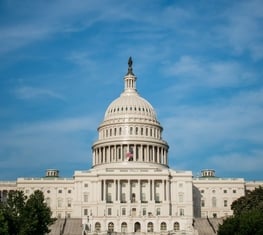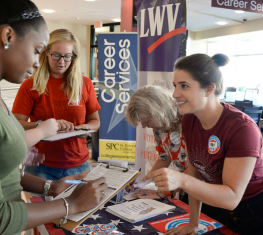
Shelby County v. Holder
Case Summary
Shelby County was a landmark decision that gutted Section 5 of the Voting Rights Act of 1965 — the most powerful civil rights legislation ever passed. LWVUS filed an amicus brief at the US Supreme Court, arguing the law’s provision of federal oversight of local election procedures was needed to protect voters of color.
Before the passage of the Voting Rights Act in 1965 (VRA), certain states constantly tried new ways to defy the protections of the 15th Amendment. States used literacy tests with grandfather clauses, whites-only primary elections, and racial gerrymandering to systematically discriminate against Black voters and deny them from voting.
After decades of disenfranchisement following the end of Reconstruction, Congress attempted to respond to these laws by making it easier to bring case-by-case litigation challenging them. But this approach was not successful. At the time, the Supreme Court found Registration of Black voters in Alabama rose only from 14.2% to 19.4% between 1958 and 1964; in Louisiana, it hardly moved from 31.7% to 31.8% between 1956 and 1965; in Mississippi, it budged only from 4.4% to 6.4% between 1954 and 1964. In each of those states, registration of voting-age whites ran roughly 50 percentage points or more ahead of Black voters.
In 1965, after years of civil rights activism across the South, Congress decided to pass the Voting Rights Act, attempting to, once and for all, rid the United States of the historical scourge of racial discrimination in voting. One of the most important provisions of the Voting Rights Act was Section 4 coverage and Section 5 preclearance. Sections 4 and 5 said that any change to voting procedures from a group of states with a history of racially discriminatory voting practices had to be approved by the federal government or a federal three-judge panel in Washington, DC.
In 2010, Shelby County, Alabama, filed a case challenging the coverage formula in Section 4(b) and the preclearance system under Section 5 of the Voting Rights Act of 1965 (VRA). Section 5 of the VRA protected democracy by requiring jurisdictions with a history of racial discrimination in voting to receive approval of any proposed voting- or election-related changes from the US Department of Justice or a federal district court before they could be implemented.
Shelby County claimed the coverage formula and the preclearance system was an unconstitutional overreach of Congress’s enforcement authority under the Fourteenth and Fifteenth Amendments and a violation of the principle of equal sovereignty under the Tenth Amendment and Article IV of the Constitution.
The US District Court for the District of Columbia upheld the constitutionality of Section 4(b) and Section 5. In the opinion, the district court cited evidence of continued racial discrimination in voting and ruled that it demonstrated a continued need for the protections provided by the Voting Rights Act. Additionally, the court noted that there was more overwhelming support for the reauthorization of the Voting Rights Act in 2006 than upon its original passage in 1965. The US Court of Appeals for the District of Columbia upheld the district court’s ruling and reasoning.
In November 2012, the US Supreme Court agreed to hear the case. The League of Women Voters of the United States (LWVUS) joined an amicus brief led by the Leadership Conference on Civil and Human Rights in support of the preclearance protections in the VRA. LWVUS' brief argued that the invalidation of Section 5 of the VRA would pose substantial risks to voting rights and highlighted the overwhelming evidence that Congress cited during its reauthorization of the law in 2006. The League of Women Voters of South Carolina (LWV South Carolina) also filed a separate amicus brief, arguing Section 5 had forced the state to address discriminatory practices in voting.
In June of 2013, the Supreme Court held that the formula in Section 4(b) was outdated and could no longer be used to enforce the Section 5 preclearance system. The Court invited Congress to enact a new coverage formula. Following the ruling, many of the previously covered jurisdictions enacted anti-voter bills that would have been struck down under the preclearance system, including Alabama. The ruling is widely cited by voting rights activists and experts as one of the largest setbacks for voting rights in modern history.
In a famous line from her dissent, Justice Ginsburg responded to the majority’s contention that the preclearance and coverage formula was outdated by writing: “[t]hrowing out preclearance when it has worked and is continuing to work to stop discriminatory changes is like throwing away your umbrella in a rainstorm because you are not getting wet.”
History has proven Justice Ginsburg correct. According to an analysis by the Brennan Center for Justice, in the 10 years after Shelby County was decided, 11 states who were previously covered by preclearance passed 29 restrictive voting laws. Another study by the Brennan Center found that during the 2022 midterms, the racial turnout gap in those states and jurisdictions was 12 percent, 5 points higher than it would have been had Section 5 preclearance had applied.
LWVUS was represented in this matter by The Leadership Conference on Civil and Human Rights and Goodwin Procter LLP. LWV South Carolina was represented by Sullivan & Cromwell LLP.
LWV Timeline
Shelby County files lawsuit
Shelby County, Alabama, files a federal lawsuit in the US District Court for the District of Columbia. The complaint challenges challenging the coverage formula in Section 4(b) and the preclearance system under Section 5 of the Voting Rights Act of 1965 (VRA), alleging they are unconstitutional under the Tenth Amendment and Article IV of the United States Constitution.
District court issues ruling
The district court upholds the constitutionality of Section 5 of the Voting Rights Act, ruling it remains a valid use of Congress' power to enforce the Fifteenth Amendment's protections against racial discrimination in voting.
D.C. Circuit affirms district court ruling
The United States Court of Appeals for the District of Columbia Circuit affirms the district court's decision and upholds the constitutionality of Section 4(b) and Section 5 of the Voting Rights Act.
Plaintiffs appeal to the United States Supreme Court
The plaintiffs file a petition for a writ of certiorari, asking the United States Supreme Court to review the case.
United States Supreme Court accepts appeal
The United States Supreme Court grants the plaintiff's motion and agress to hear their appeal.
LWV South Carolina files amicus brief
The League of Women Voters of South Carolina and several state legislators submit an amicus brief defending Section 5 and its preclearance provisions. The brief argues Section 5 moved South Carolina to address racial discrimination in voting and that the state had continued to pass discriminatory voting laws.
LWVUS files amicus brief
LWVUS joins an amicus brief along with the Leadership Conference on Civil and Human Rights defending Section 5. The brief argues that invalidating Section 5 would erode the progress made since 1965 in combating racial discrimination in voting, and that the covered jurisdictions would enact discriminatory voting practices without its protections.
United States Supreme Court issues ruling
The United Stats Supreme Court rules that the Section 4(b) formula is unconstitutional. The majority reasons that, given changes in the southern states covered by preclearance, it is now outdated and treats the covered states unequally. The opinion invites Congress to create a new formula for imposing preclearance.




